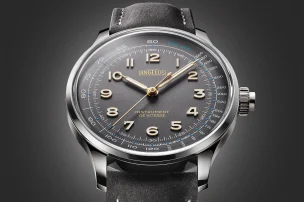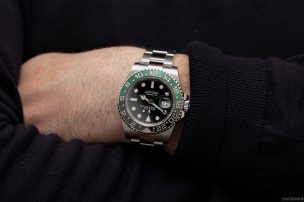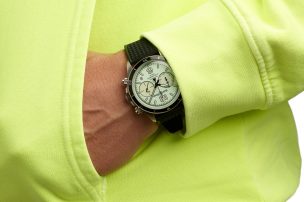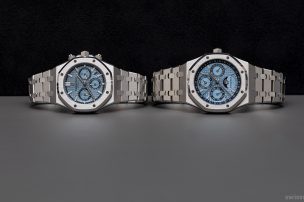
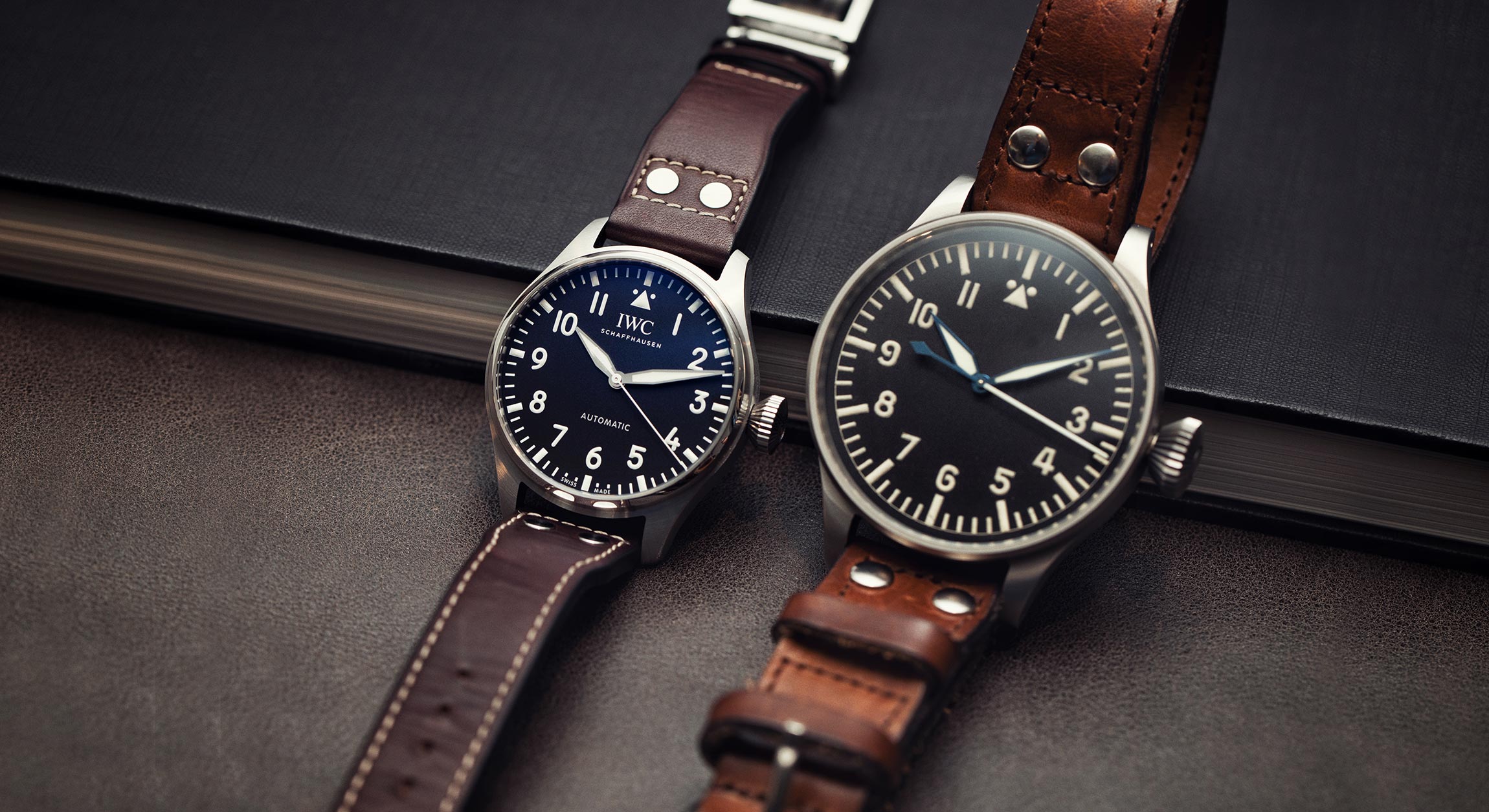
IWC Novelties 2021: More Pilot’s Watches Landing Soon
Over at Schaffhausen, one tends to focus on just one collection each year. Last year it was the Portugieser line, which underwent both a revision and extension. This year, however, another IWC favourite is in the limelight; pilot’s watches. These models have always enjoyed a huge level of popularity at IWC – both with design-orientated fans, as well as those who prioritise functionality and a level of sportiness. At this year’s digital Watches & Wonders, both types of enthusiasts will be more than content with the aviation-orientated IWC novelties of 2021.
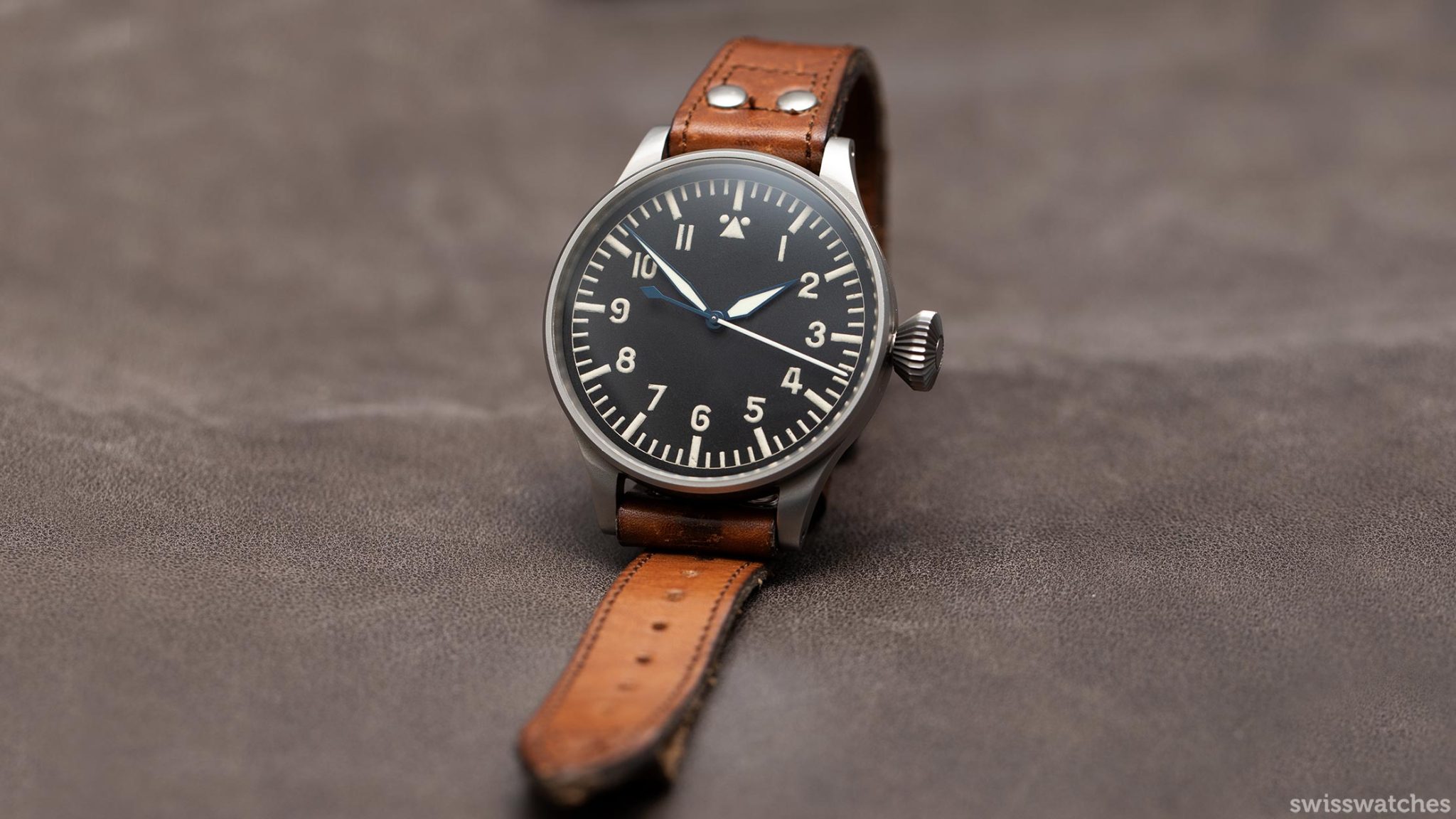
A new 41 mm chronograph: Ref. IW3881
It seems that the recently introduced Tribute to 3705, limited to 1,000 pieces, was only the beginning. With a design that takes inspiration from the popular 3705 from 1994, the Ceratanium chronograph was primarily aimed at fans already familiar with the brand. By contrast, the new Pilot’s Watch Chronograph in 41 mm appears to be pretty much the ideal IWC “beginners chronograph”, as it were.
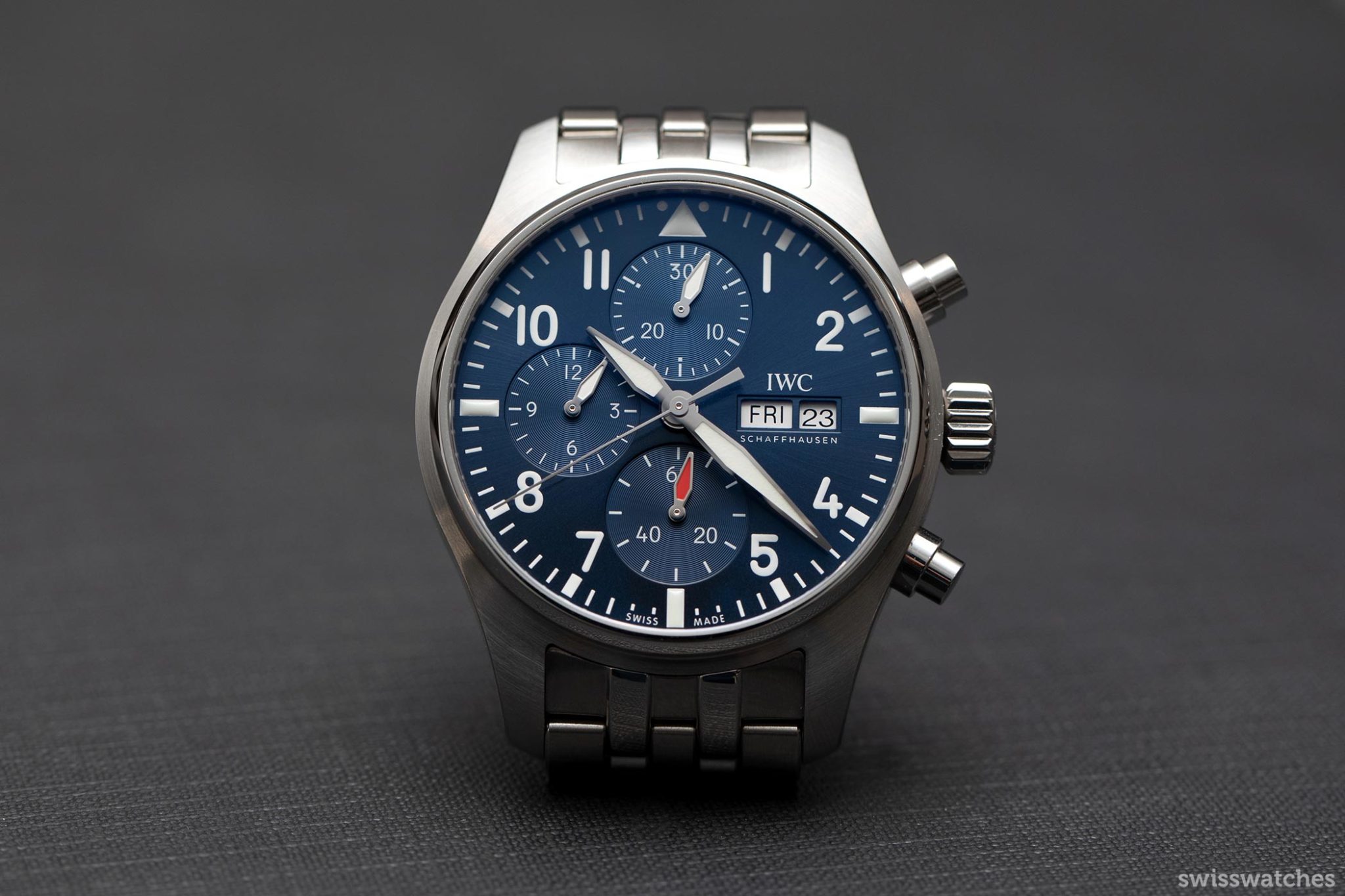
With its 41 mm diameter, it is in line with the current brand strategy; this involves offering the most popular models from Schaffhausen in smaller proportions, thus also suiting slimmer wrists. While the brand’s 43 mm chronograph watches were already joined by the 41 mm Spitfire editions back in 2019, a steel bracelet option remains unavailable. Furthermore, the vintage design with its “Fauxtina” hands (using old-school looking luminescent material) clearly differentiated the Spitfire models from the ultra-technical look of the classic pilot’s chronos.
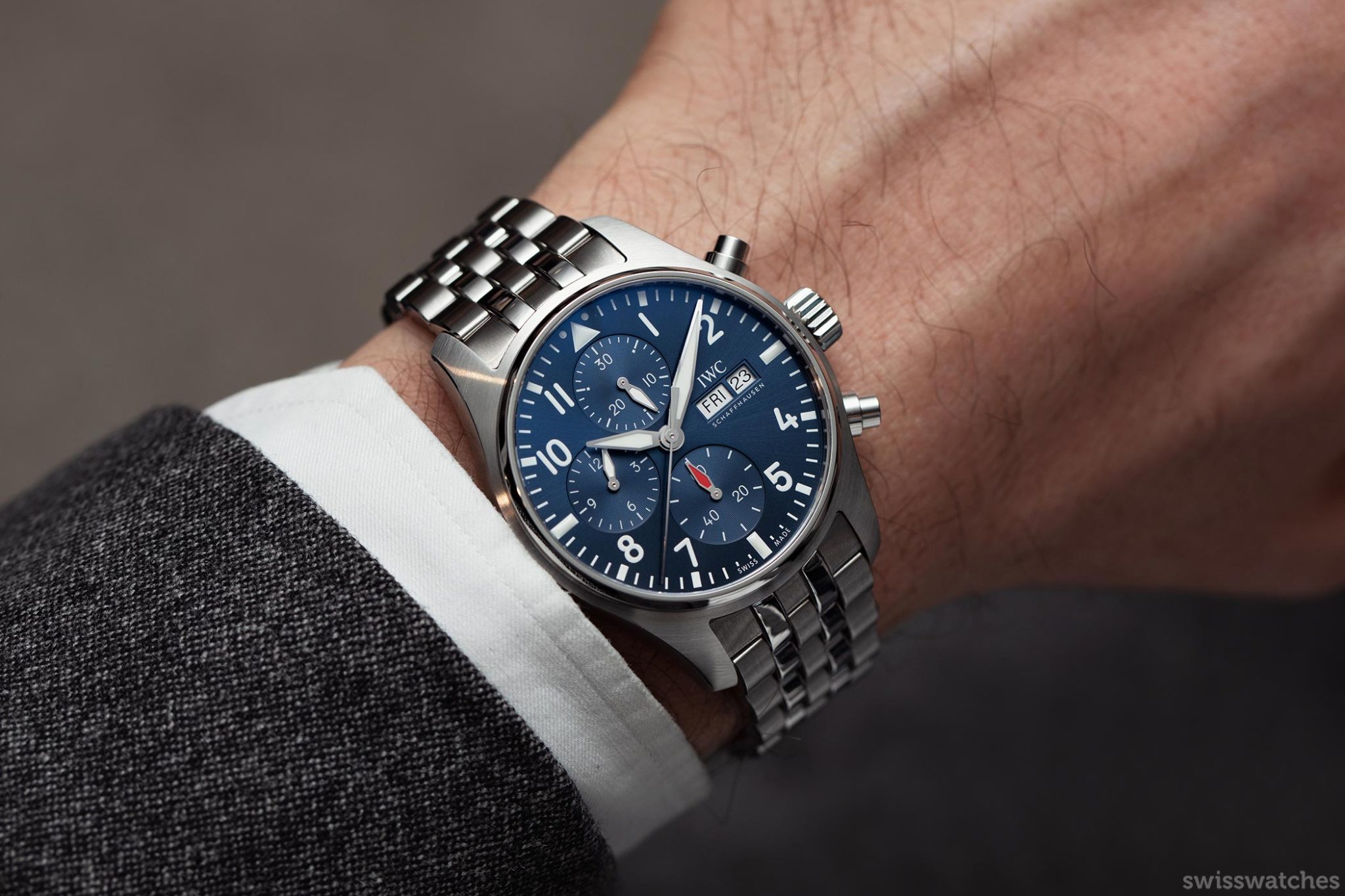
The new Ref. IW3881 combines these smaller dimensions with the highly contemporary look, that is nevertheless a strong part of IWC’s history. The chronograph with date and day display is available with a blue or green dial. It comes with either the stainless-steel bracelet (7,600 euros) or a calfskin strap (6,850 euros). The latter option comes in blue for the blue dial version, or brown for the green dial version.
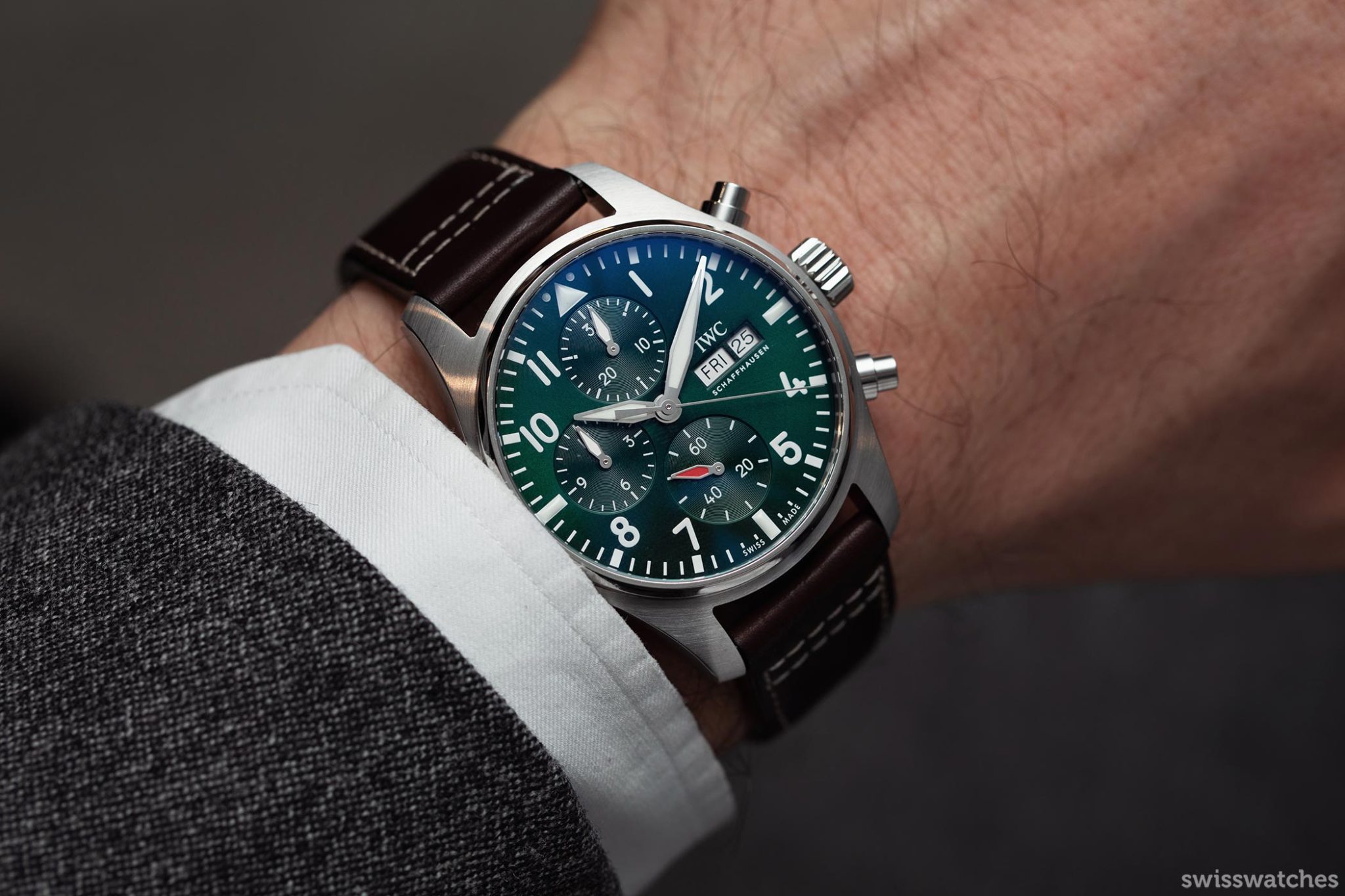
A first-rate bracelet
Even with its steel bracelet, the Ref. IW3881 is evidently an laid-back, practical alternative for those who don’t succumb to the eternal hype of the Rolex Daytona. The watch’s dial, taking its inspiration from a plane cockpit, has a similarly high recognition value. With a 14.5 mm height, the watch wears very well on the average male wrist, measuring more or less 17 cm. Meanwhile, the bracelet that it comes with not only feels comfortable, but also lends the extraordinarily well executed watch a pleasant weight and presence on the wrist.
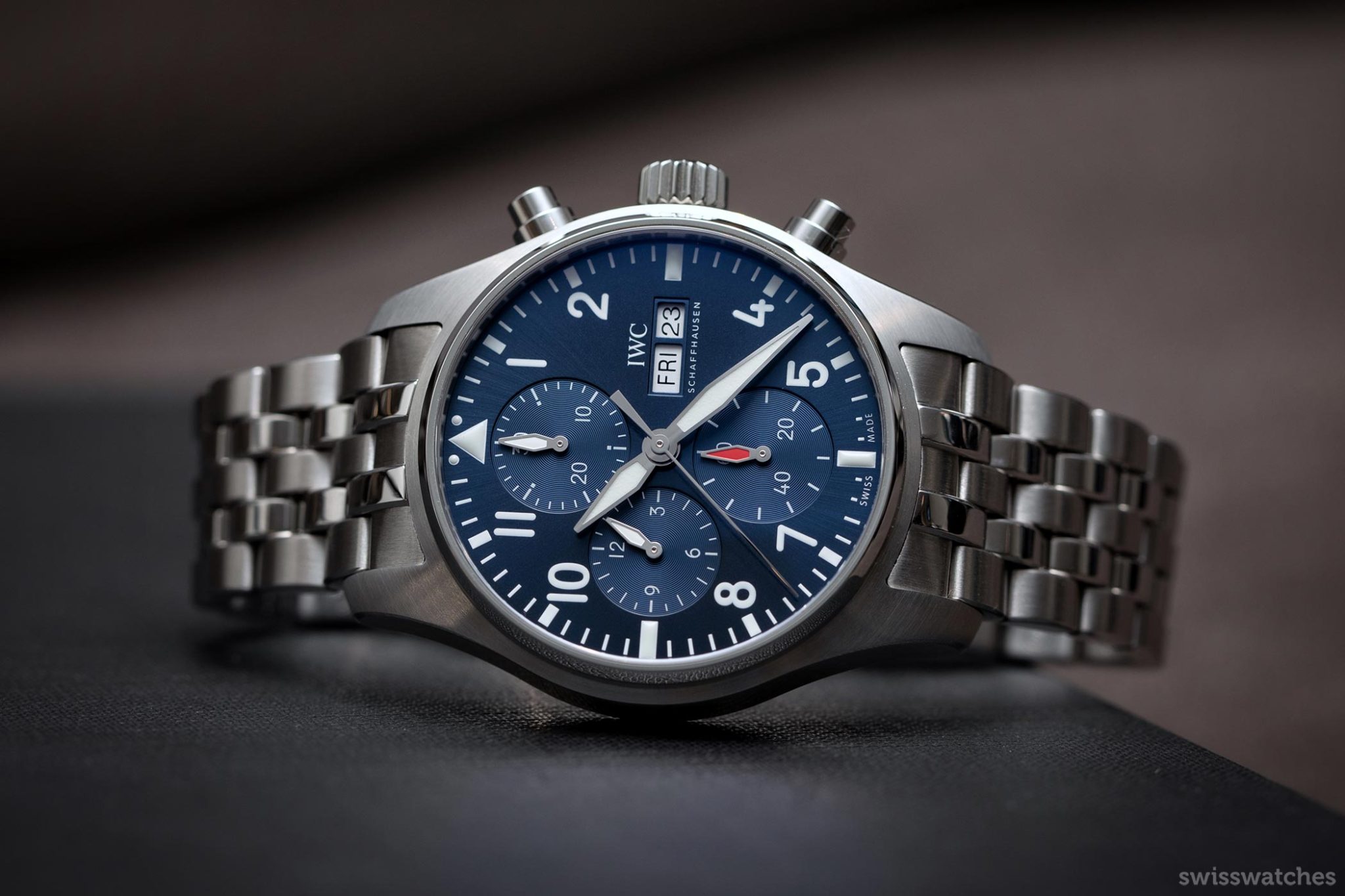
Thanks to the extremely easy to use EasX-Change-System, one can quickly switch from the bracelet to other strap options. Furthermore, wearing the optional leather or rubber straps that are also available gives the watch an entirely different vibe.
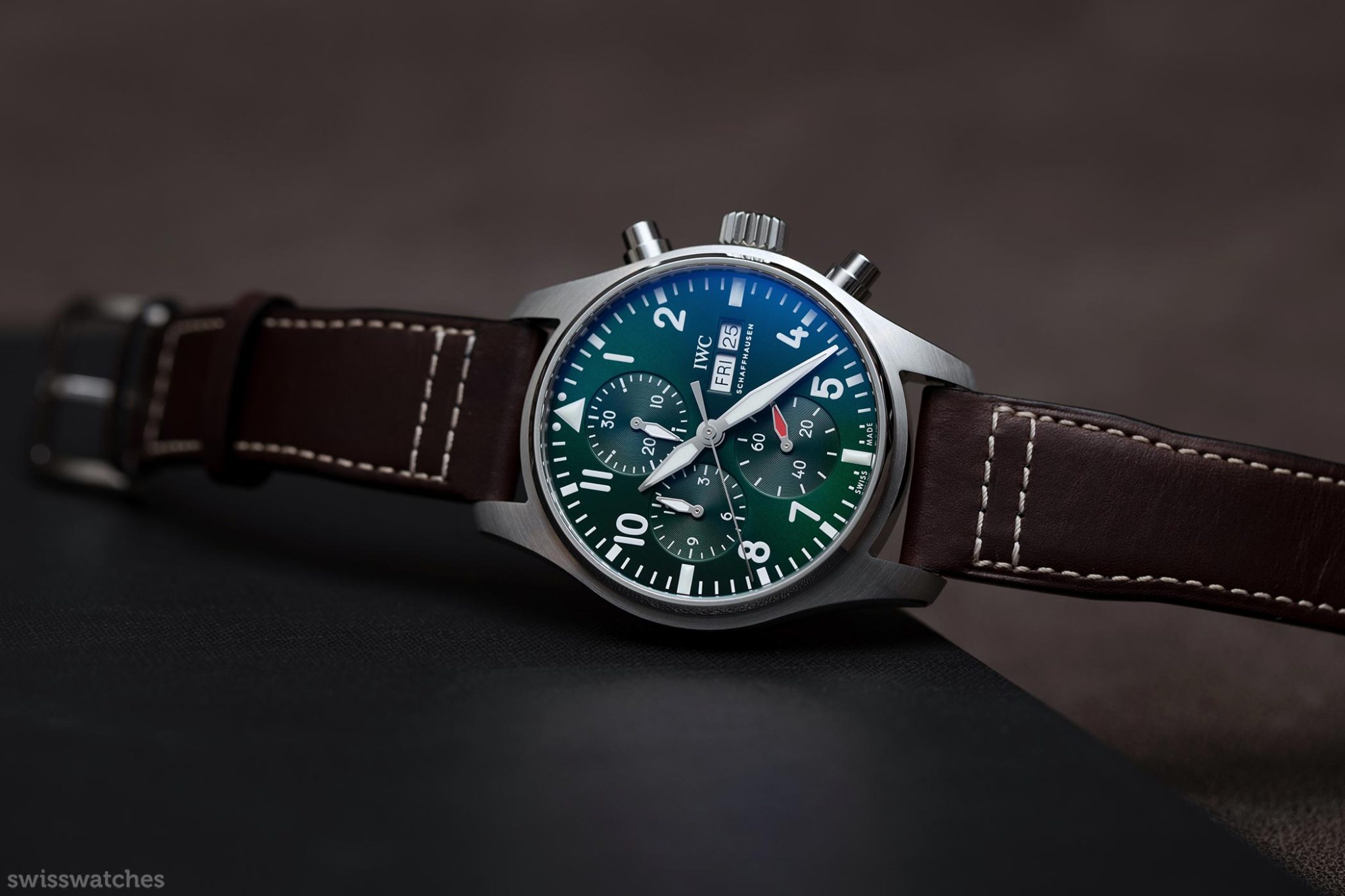
Aside from the new aesthetic features, the biggest change is actually inside the watch. Ticking inside is the in-house calibre 69385 with a 46-hour power reserve, which is visible via the sapphire crystal caseback.
In terms of the amount of pieces to sell, this chronograph will likely be the most important novelty for IWC. This is due to its very popular design (with good reason), as well as its size, which is wearable for pretty much everyone.
The new Big Pilot Top Gun “Mojave Desert” models
There are some watches that are crucial in contributing to the economic success of a horology house. The chronographs mentioned earlier are a prime example. However, there are also models that, more than anything else, serve to significantly shape the story and image of a brand. The latter aspect applies to the two new Big Pilot’s Watch Top Gun “Mojave Desert” editions.
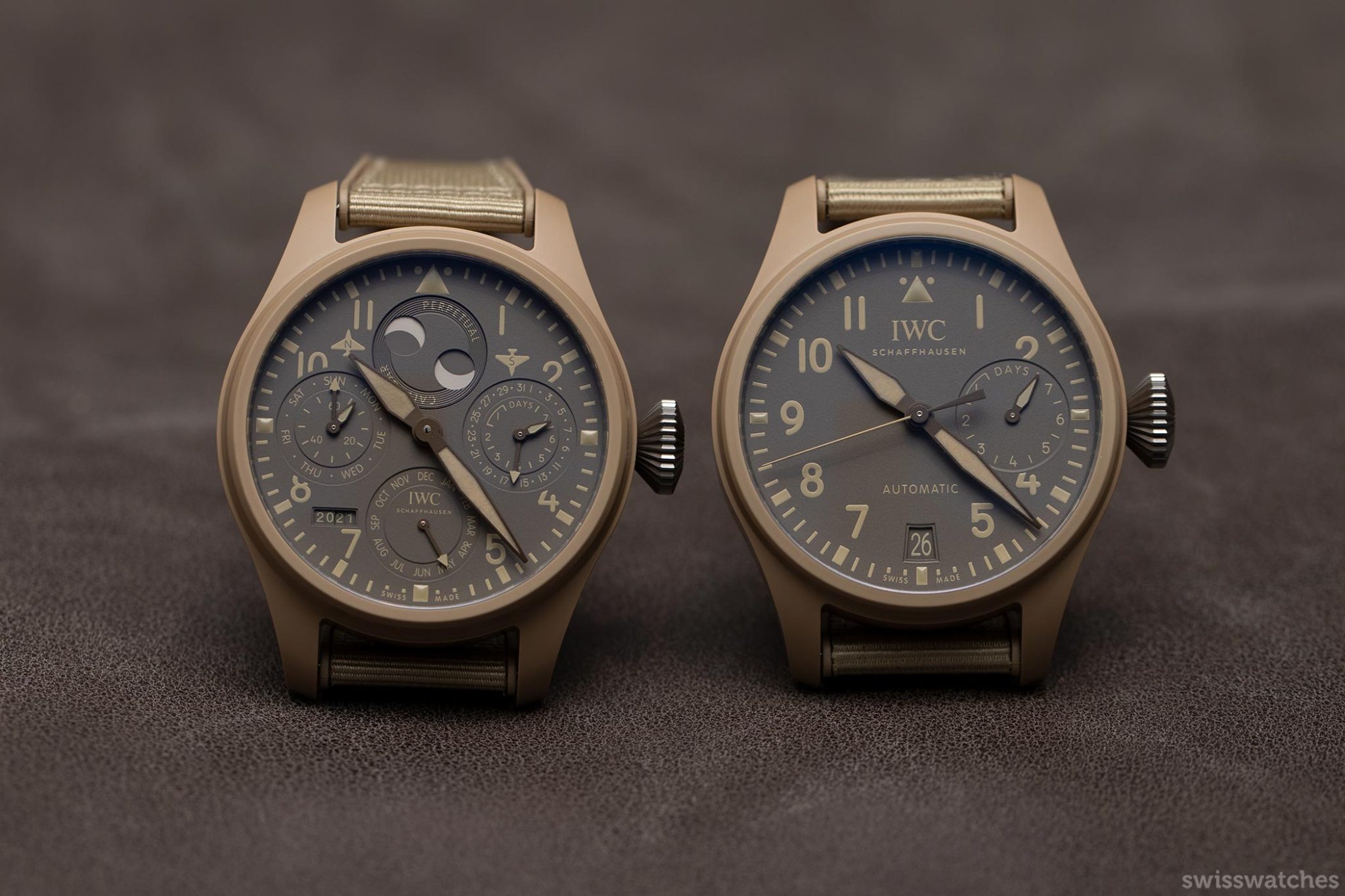
With their sandy-beige ceramic cases and dark brown dials, one could consider these pieces to be camouflage-coloured in the desert. Anywhere else, however, they seriously stand out. In order to understand the new Big Pilot editions, we need to cast our eyes back a couple of years. 2019 saw the introduction of the Pilot’s Watch Chronograph Top Gun Edition “Mojave Desert”. This was a limited edition of 500 pieces in the same sandy colour.
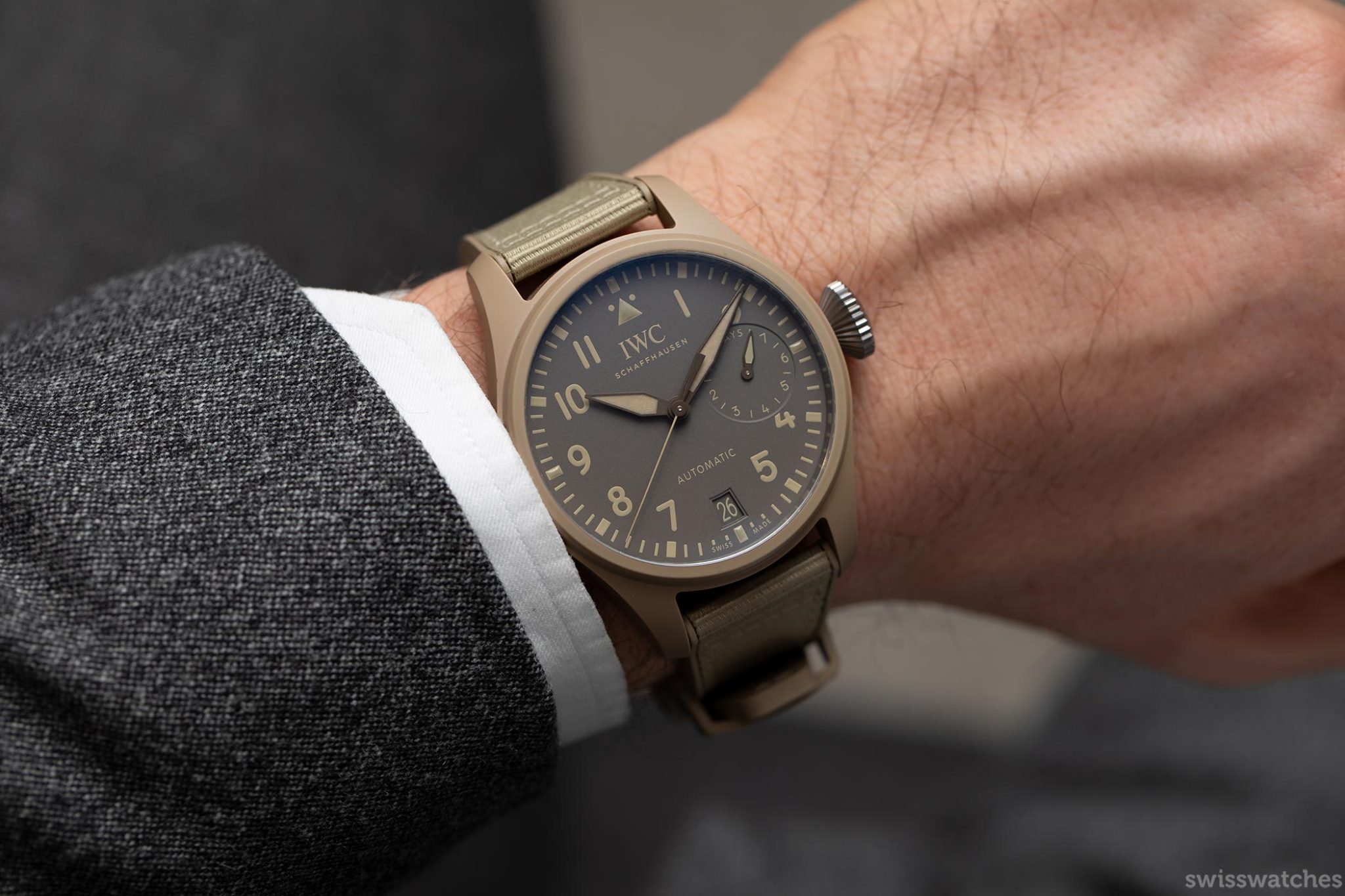
A unique strategy
Chris Grainger-Herr, CEO of IWC Schaffhausen, thoroughly enjoys talking about the genesis of the watch’s design, which takes inspiration from a journey through the Mojave Desert. However, there is also something that almost played a more important role than this marketing approach. At a time when IWC’s competition was busy creating highly colourful ceramic cases – pretty much anything from yellow and red to orange and blue is now technically possible – the brand steadfastly catered to the taste of its own customers with its earthy nature-meets-military look. In this sense, IWC is offering a unique ceramic look of its own.
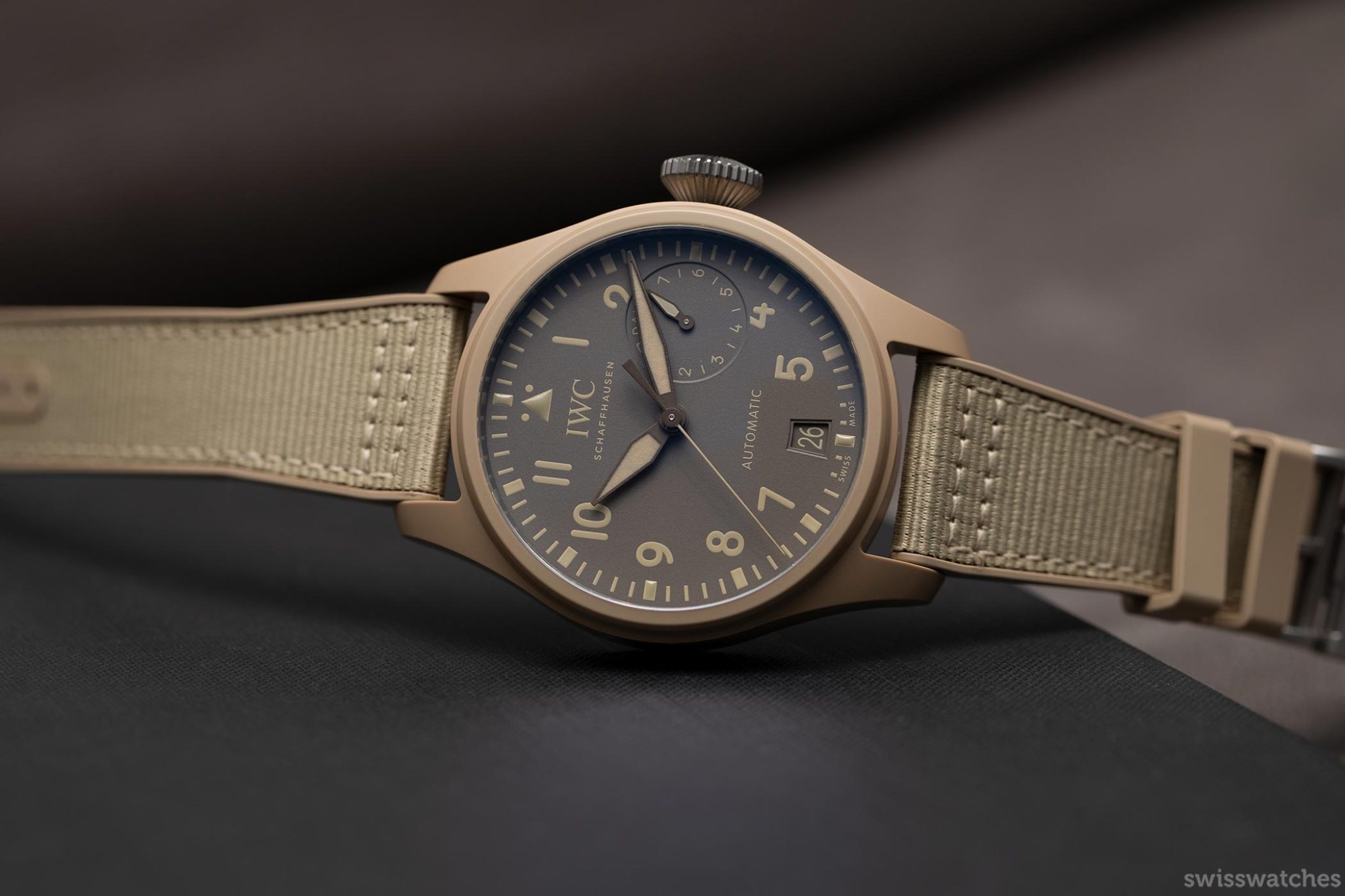
By all accounts, the 500 pieces sold faster than it takes to pronounce the long name of the model. Even prominent friends of the maison supposedly went empty-handed. Even today, the watch’s price remains stable and often even trades on the pre-owned market with an increase in value. Against this successful background, launching another desert watch appears to have been a no-brainer. Furthermore, as with its predecessor, IWC Schaffhausen seem to want to stir up a certain desire with its latest watch. While the new Big Pilots are not technically limited, a maximum of 150 pieces of the perpetual calendar and 250 pieces of the three-hand Big Pilot watches are to be produced per year. The price for the IW506003 is 14,800 euros, while the IW503004 with perpetual calendar costs 33,600 euros.
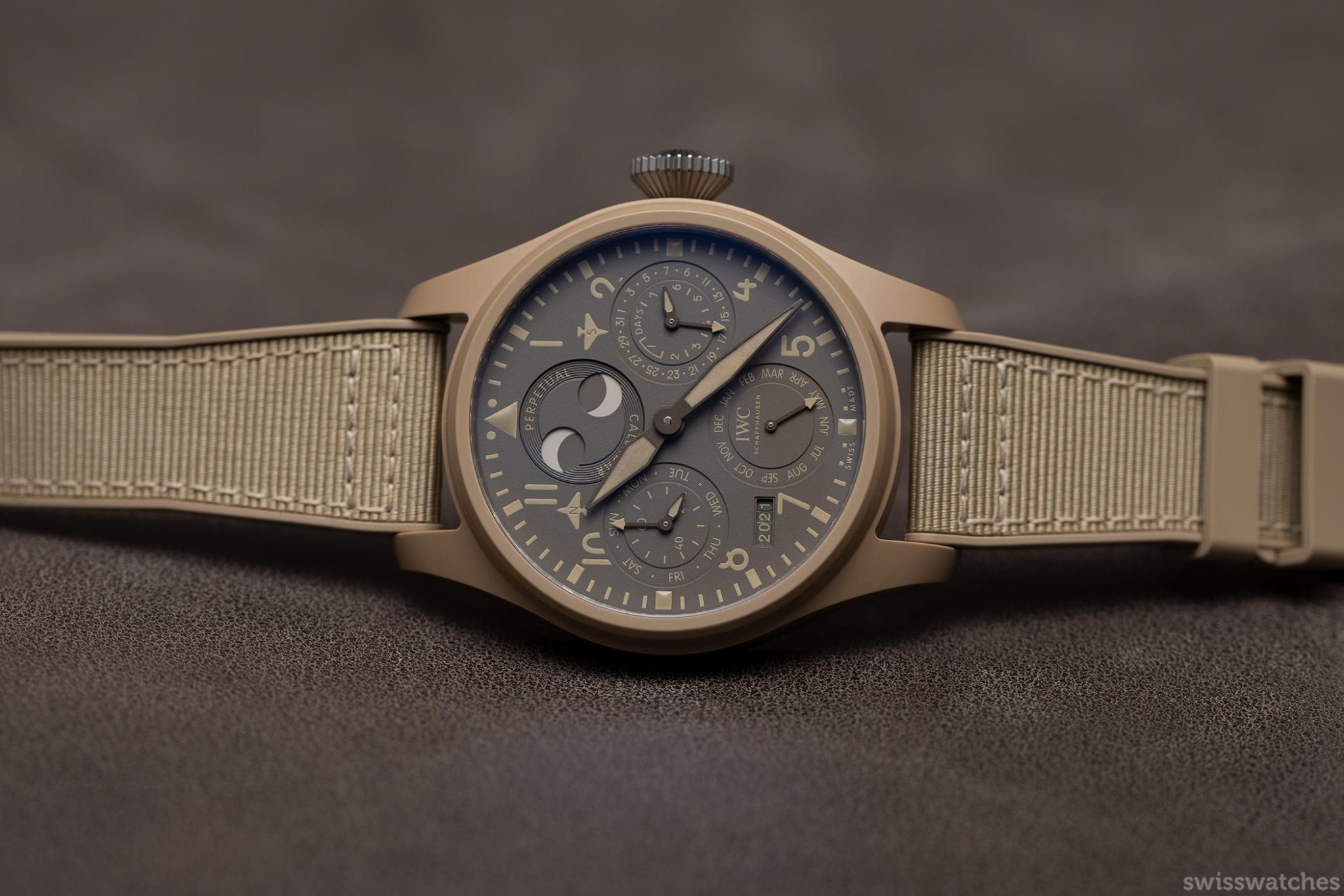
The best of both worlds
The military-style Mojave models unite the unmistakable Big Pilot design, with its 1940s origins, with an extremely stylish exterior. While indisputably a watch for pilots, it wears equally well without camouflage gear – whether on the beach or on a hike. While the exterior of the watch, with its more than 46 mm diameter, may have the potential to be a casual “it-piece”, the watch also serves as a piece of great IWC history.
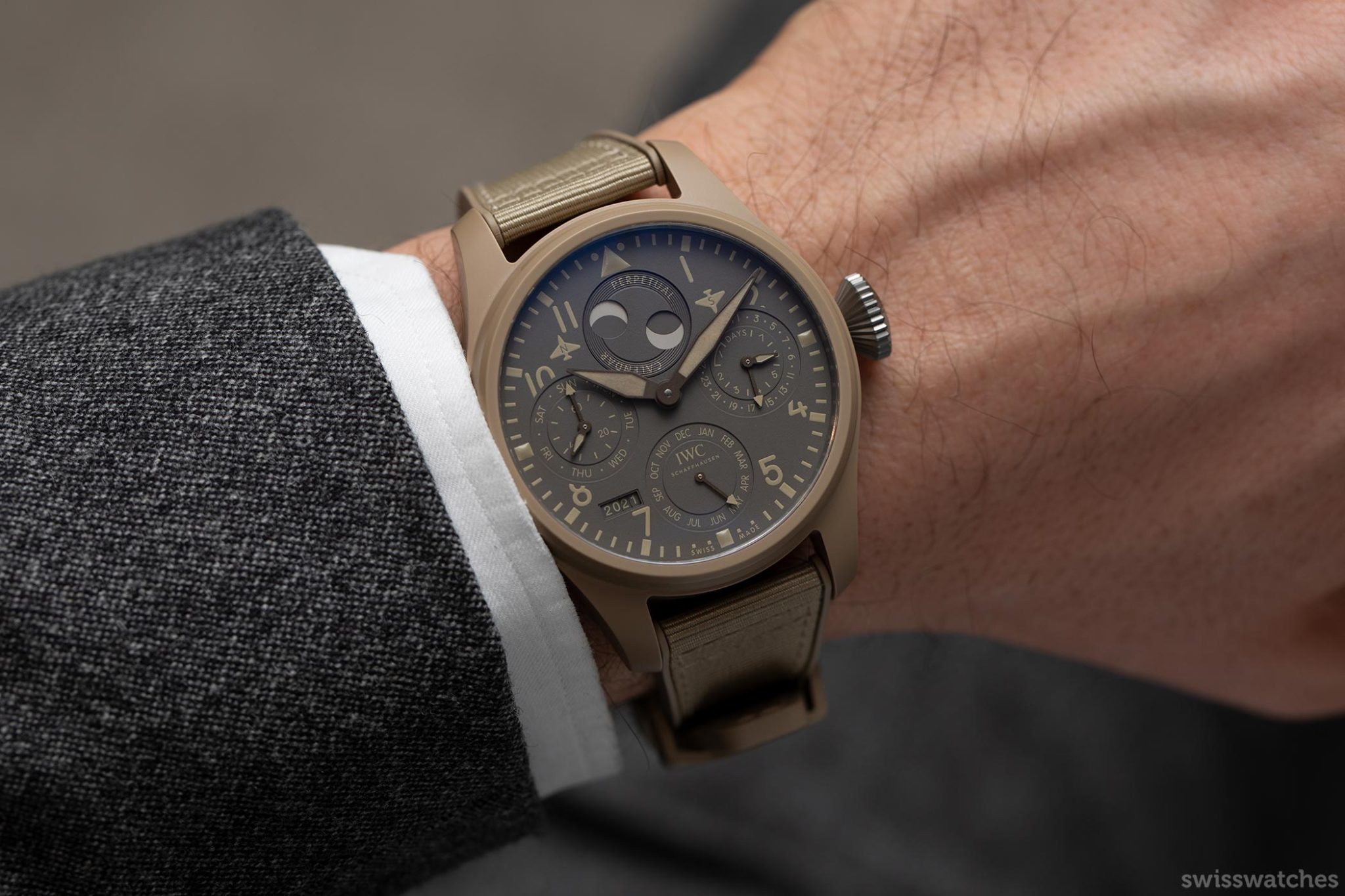
This is even more true of the perpetual calendar version. As unusual as the combination of an extra-large pilot’s watch and a perpetual calendar complication may seem, together they unite the very things that shape IWC to this day. This includes the strong aviation tradition, as well as IWC’s in-house perpetual calendar, developed by Kurt Klaus. The ingenious construction can be controlled simply via the crown. Meanwhile, the calendar module, which is made of just 82 individual parts, is one hundred percent in keeping with IWC’s self-image of seeking the most reliable, simple and engineer-driven solutions possible, rather than standing in its own way with an excess of unnecessary refinements.
The new Big Pilot 43 mm
Sometimes it pays to think small. A prime example of this philosophy is this new Big Pilot, with its 43 mm case, in contrast to a lavish 46 mm. It appears that, just like last year with the perpetual calendar from the Portugieser collection, IWC is using the same line of thought as in 2021. Even the new Big Pilot, which already bears the claim to greatness in its name, it is sometimes possible to be a little less “big”. After all, the smaller Big Pilot still wears extra-“big” thanks to its sizeable crown. Even with a 43 mm diameter, it is anything but a “Small” Pilot.
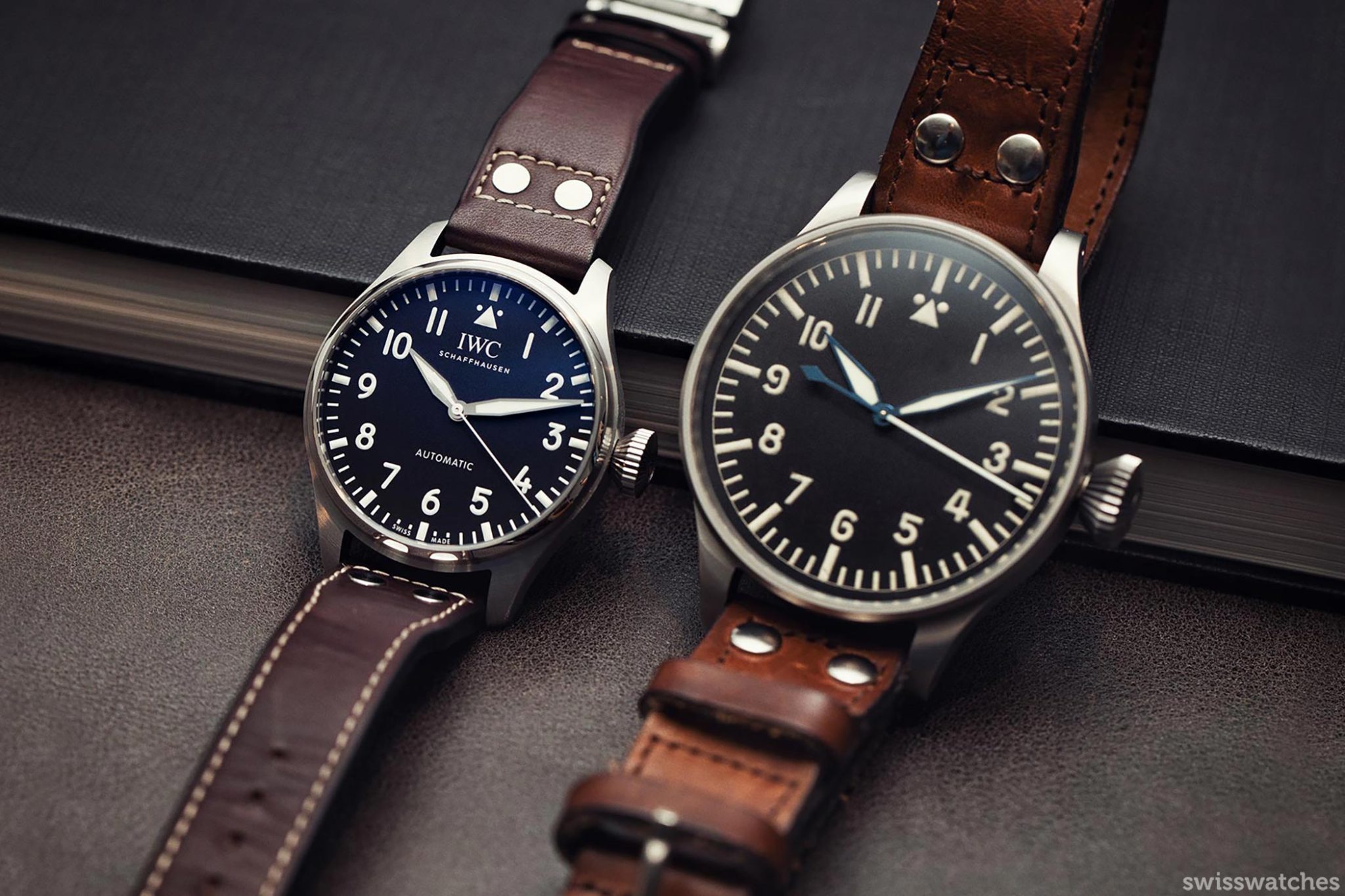
Nevertheless, the three millimetres make a world of difference when it comes to reaching target groups. The idea of making this world-famous design wearable for those who aren’t human giants is as simple as it is clever. It also in no way dilutes the DNA of the watch in the process. After all, a Big Pilot – regardless of the edition – will always be conspicuous. The crown, the height (in this case 13.6 mm), and the squeaky-clean aesthetic ensure that much. What’s more, the Big Pilot is a watch that is meant to be seen. It is one that stands by its generous dimensions; it is to the wrist what the Mercedes-Benz G-model is to the road; an eye-catcher, yet also a classic.
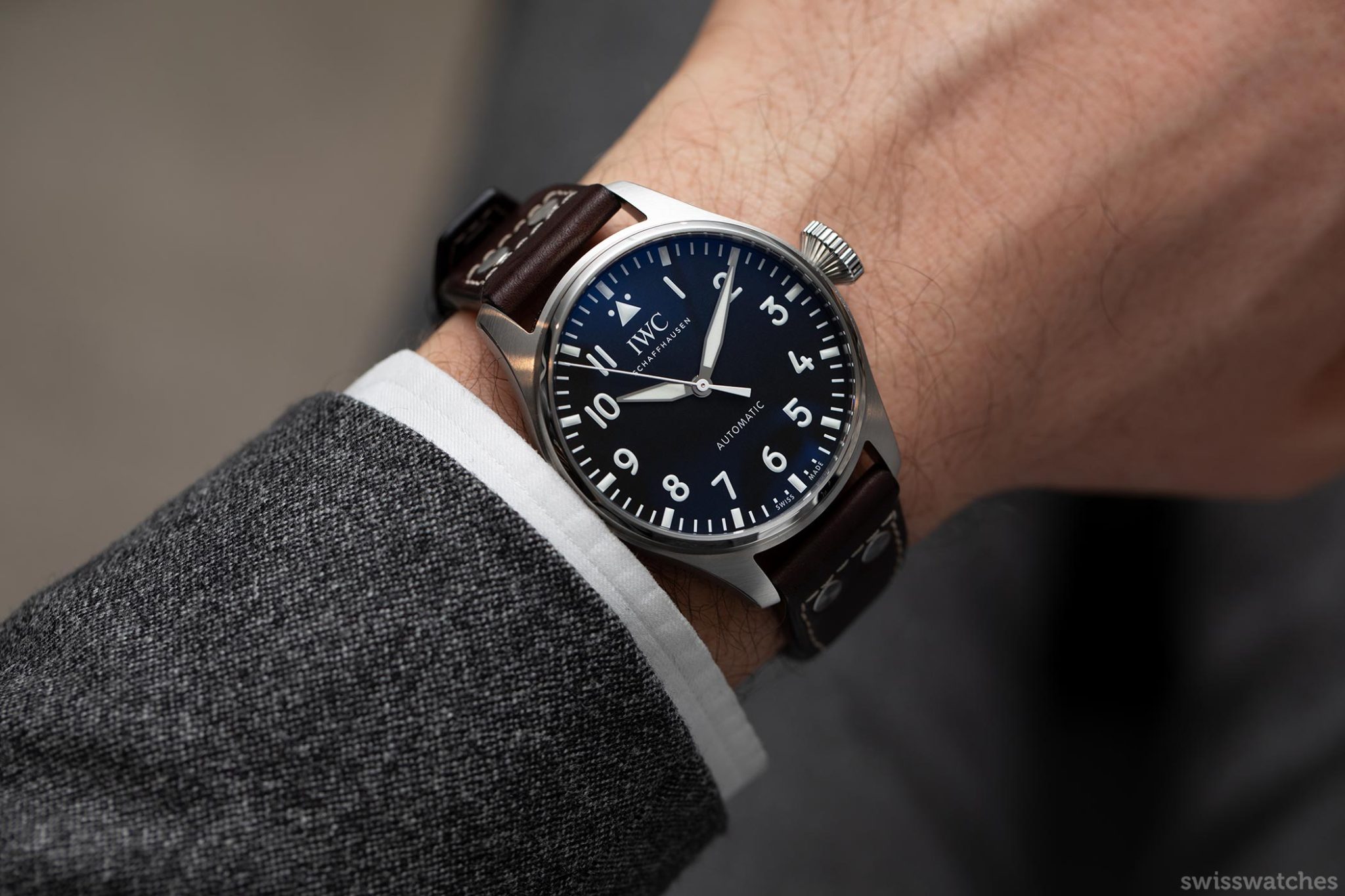
Facts and figures
The new 43 mm version (Ref. IW3293) will initially be available in boutiques with a choice of a black dial (plus a brown calfskin strap) or blue dial (with a blue calfskin strap or steel bracelet). The Ref. IW3293 costs 8,850 euros with a leather strap or 9,850 euros with the steel bracelet. This represents a price advantage of around 4,000 euros for the leather options, compared with the original 46.2 mm Big Pilot, which currently costs 12,950 euros.
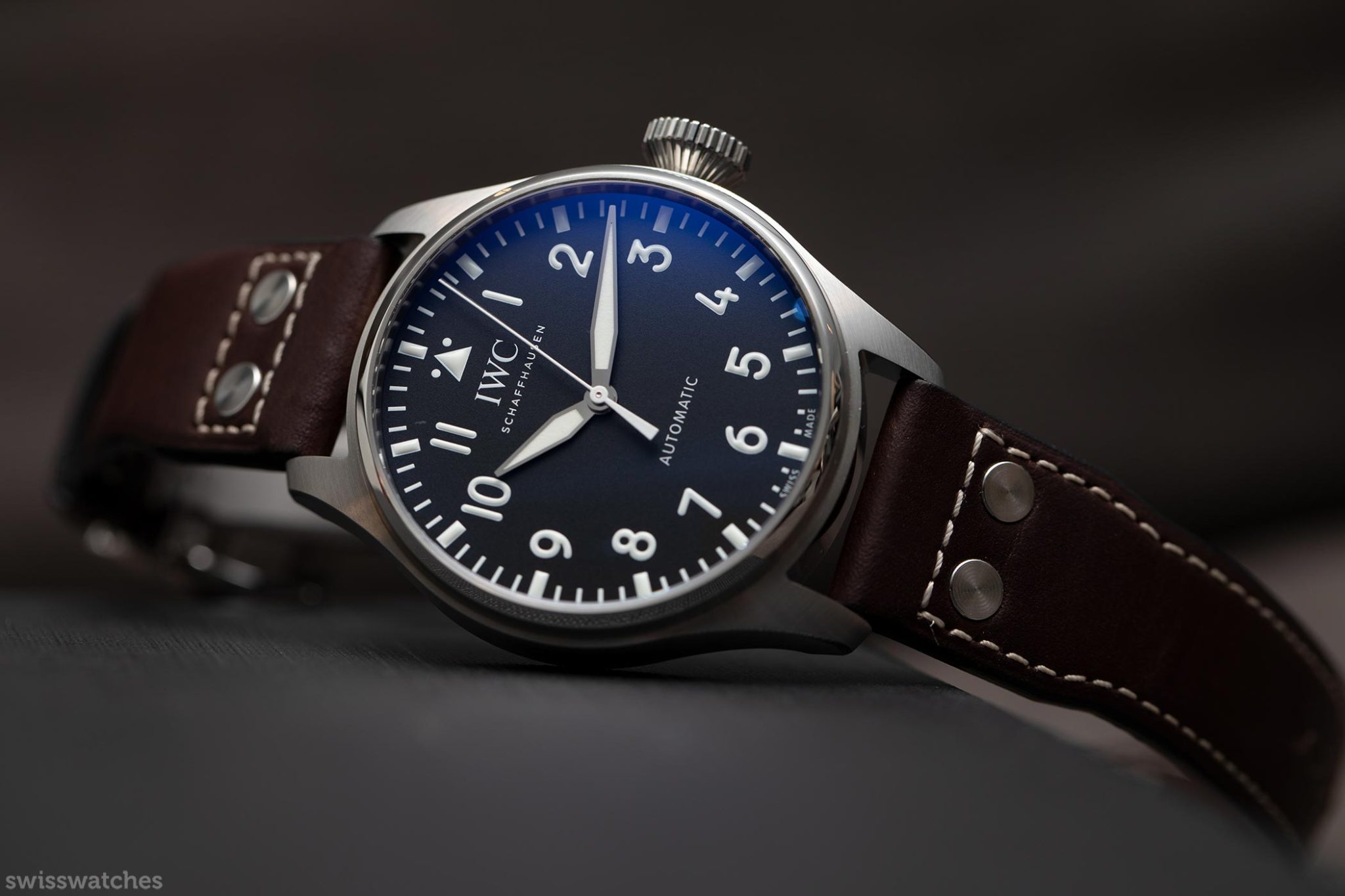
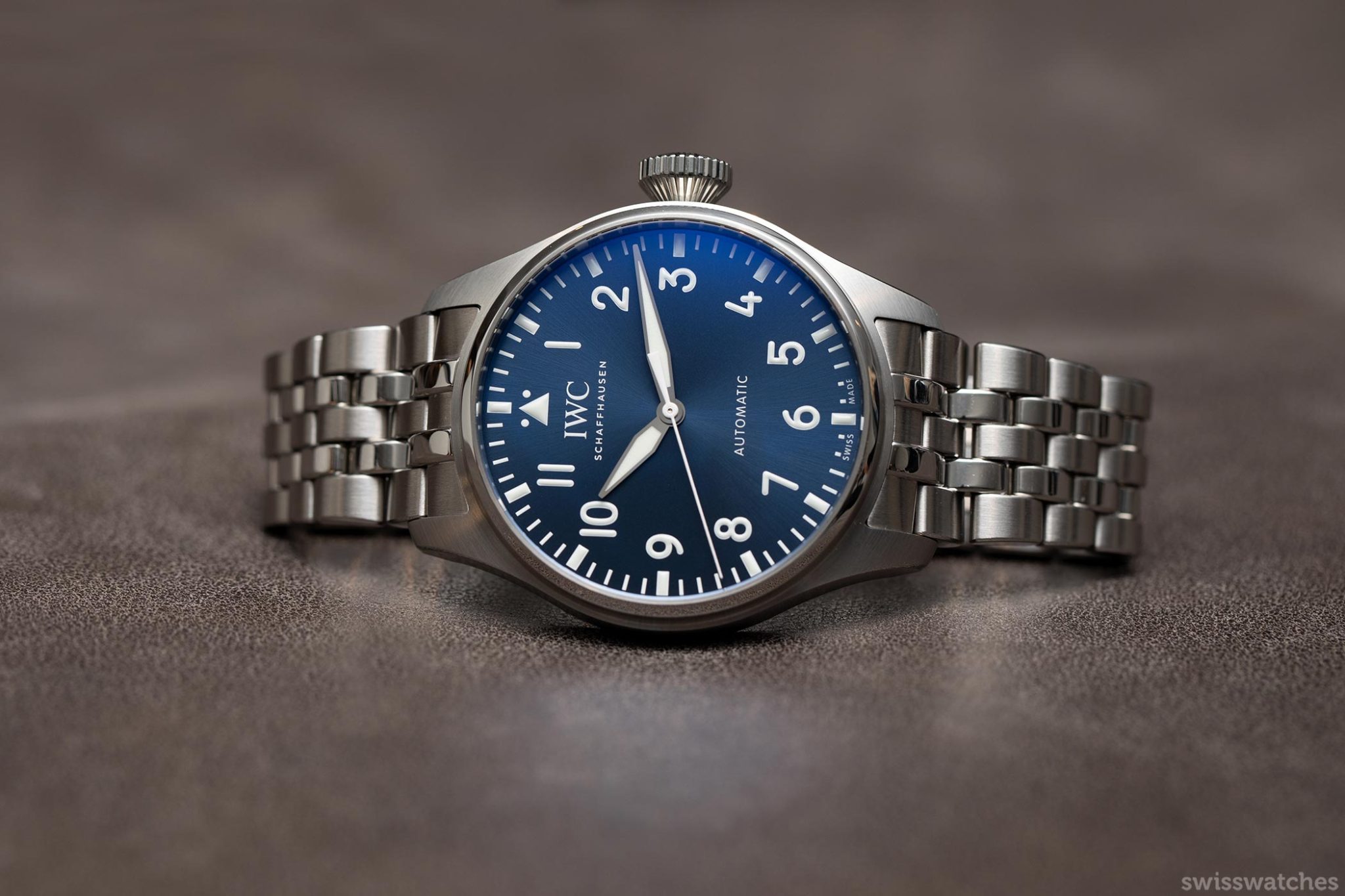
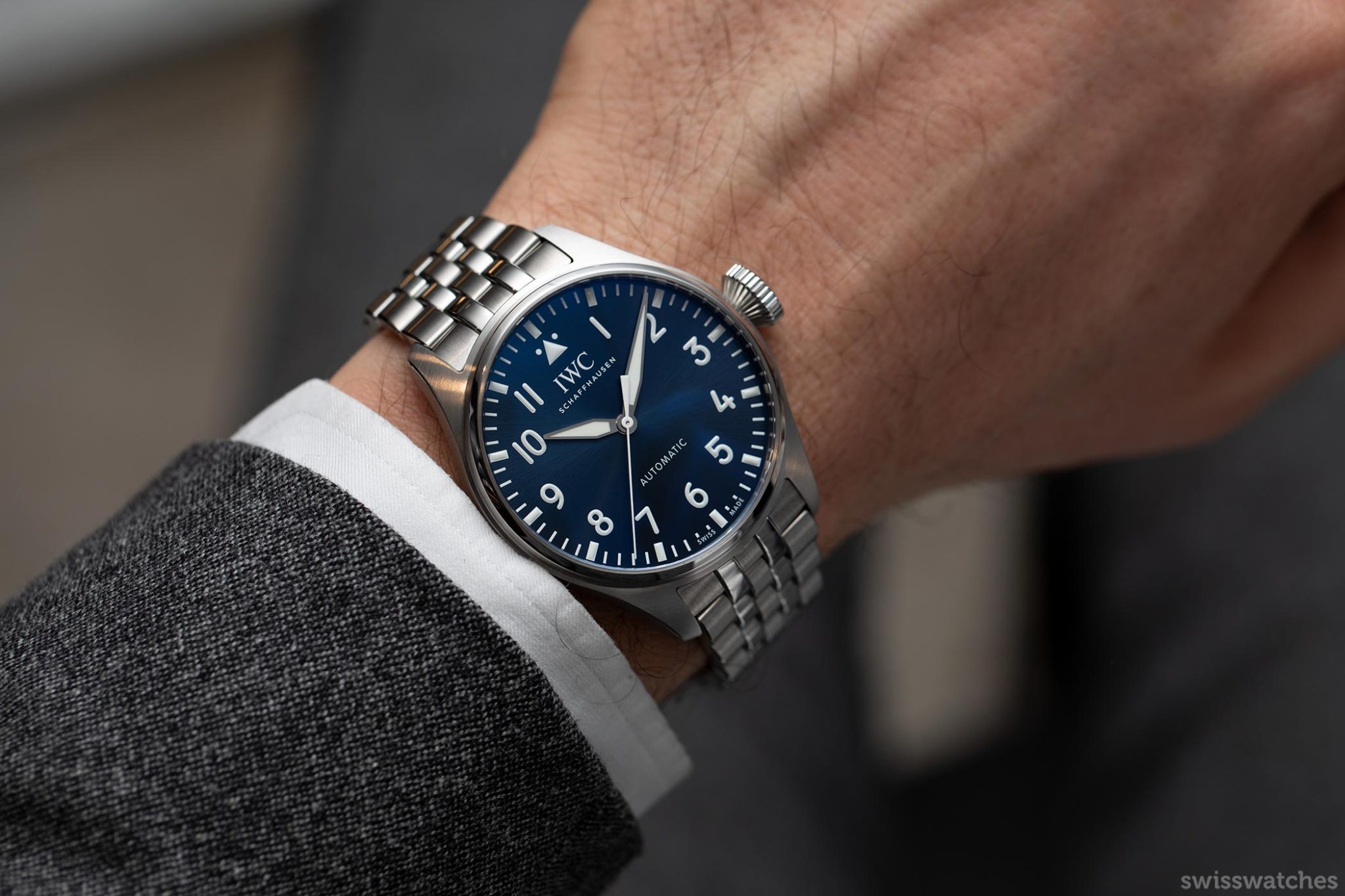
Unlike that watch, however, the 43 mm version is a pure three-hand watch. It is left without a date or power reserve display. Furthermore, the power reserve with the Calibre 82100 is also only 60 hours, rather than seven days. All in all, the Ref. IW3293 is a somewhat smaller, slimmer edition – but it’s a strong addition to the collection precisely because of its impressively uncluttered dial.
The new IWC Big Pilot Perpetual Calendar
Infinity is a fascinating thought. This explains why perpetual calendars are so appealing to the senses, even beyond the pure horological-mechanical challenge they present. If treated correctly, such a watch will not need to be reset for many generations. The IWC perpetual calendar by Kurt Klaus requires its first correction in the year 2100, and it displays the four-digit year until the year 2499. It is this that makes the perpetual calendar the favourite complication of the Toolwatch Big Pilot. In fact, it has already been launched in 37 different editions since 2006.
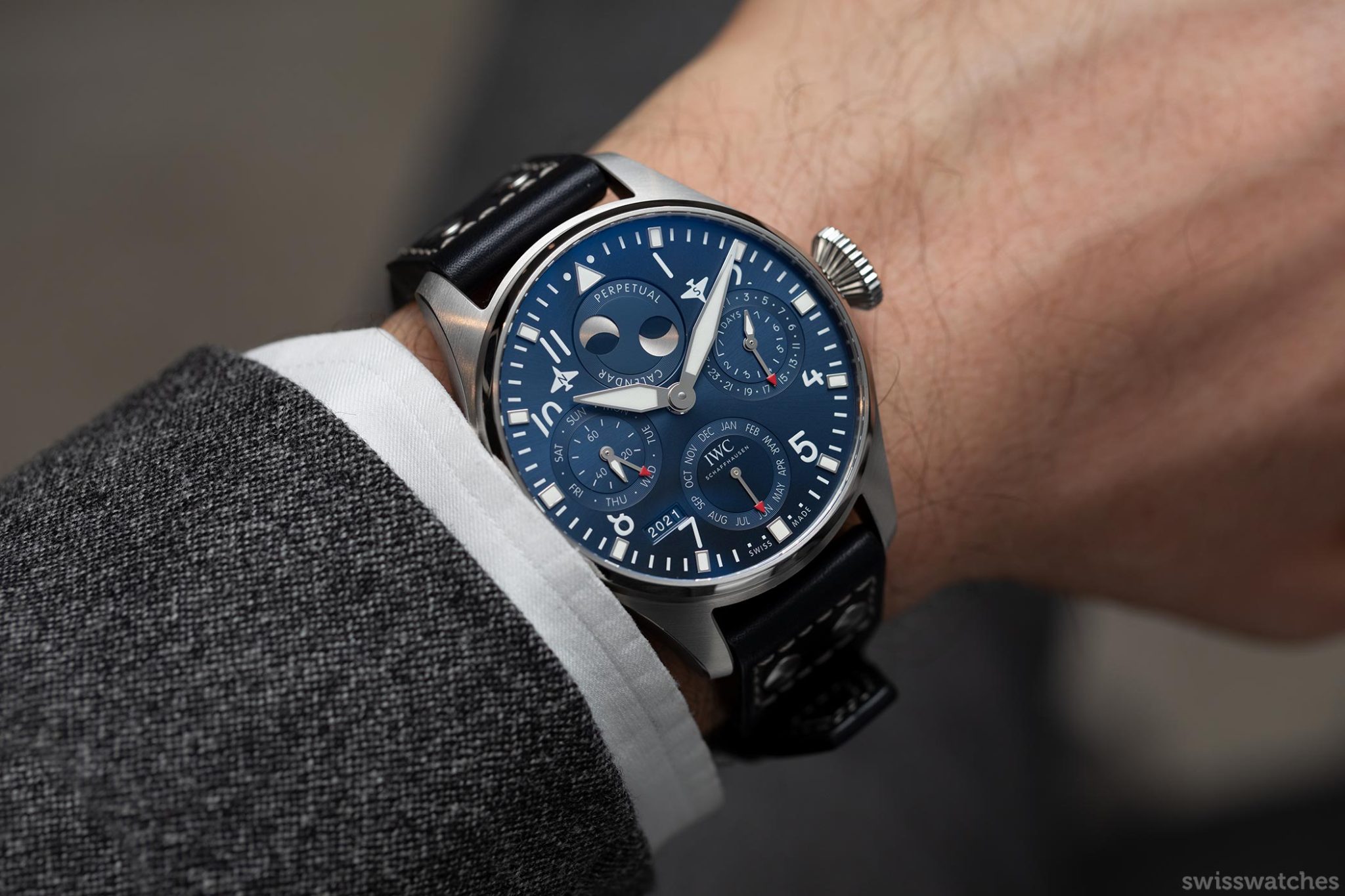
The latest addition is a highly successful combination of size and grandeur. The case uses plain, simple steel, while the dial is in eternally popular blue. With the date, day of the week, month, four-digit year display and perpetual moonphase, it otherwise presents itself in very familiar Big Pilot form. At 29,800 euros, its price is similar to the Spitfire edition in bronze – and almost two thousand euros cheaper than a comparable edition in ceramic.
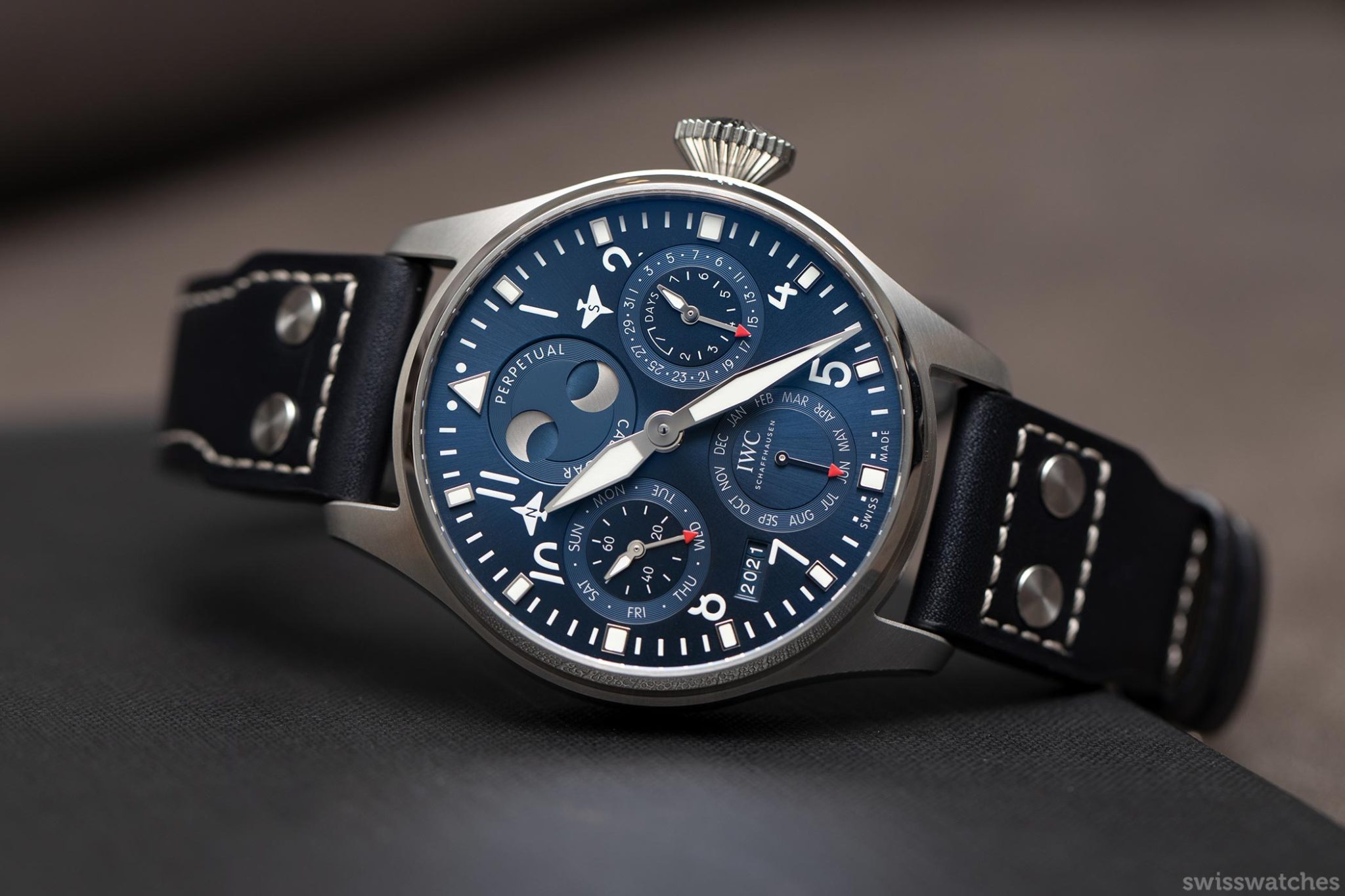
In return, customers get a timepiece featuring both a design and complication that are typical IWC, and which will be safe from any zeitgeist or changing trends in the many years to come.

